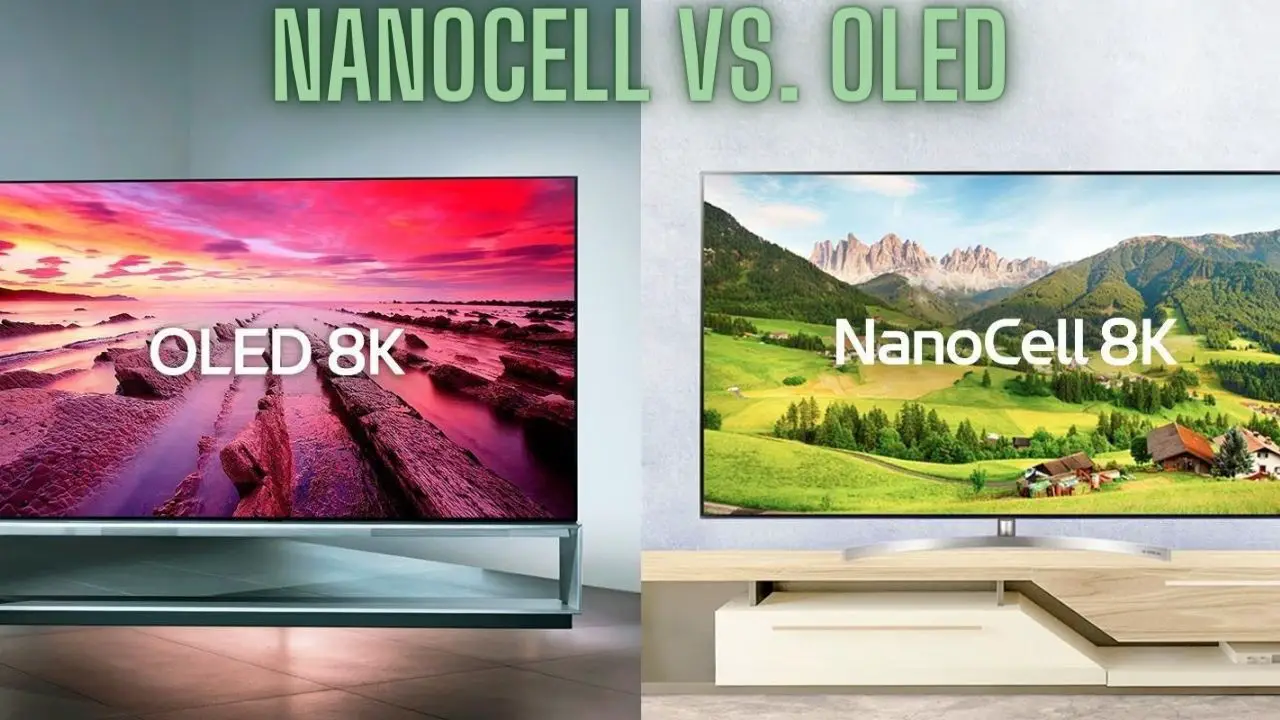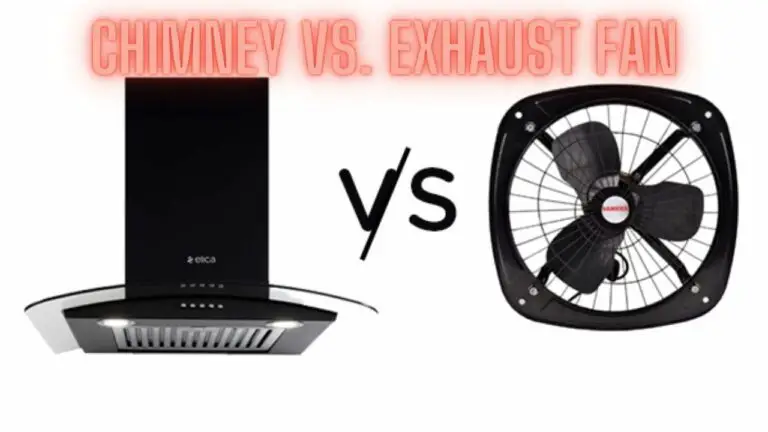NanoCell vs. OLED: A Comprehensive Comparison
Introduction
When it comes to choosing a television, two prominent technologies have been dominating the market: NanoCell and OLED. These display technologies offer stunning visuals but employ different approaches to achieve them. In this comprehensive guide, we’ll dive deep into the world of NanoCell and OLED, exploring their technology, picture quality, advantages, disadvantages, and which one might be better suited for your specific needs.
Understanding NanoCell Technology
What is NanoCell?
NanoCell is a proprietary display technology developed by LG Electronics. It is based on the use of nanoparticles, specifically nanometer-sized particles called Quantum Dots, to enhance the color and picture quality of LED-backlit LCD (Liquid Crystal Display) televisions. The primary goal of NanoCell technology is to improve color accuracy and overall brightness while reducing unwanted side effects like color bleeding and image distortion.
How NanoCell Works
- Quantum Dots: NanoCell TVs feature a layer of Quantum Dots positioned in front of the LCD panel. These Quantum Dots emit light of specific colors when exposed to blue LED backlighting.
- Color Accuracy: By using Quantum Dots, NanoCell technology can significantly improve color accuracy. The Quantum Dots produce highly saturated and pure colors, resulting in a wider color gamut and more lifelike visuals.
- Enhanced Brightness: NanoCell TVs are known for their high brightness levels, which make them well-suited for well-lit rooms or spaces with natural light. This brightness can also enhance HDR (High Dynamic Range) content.
- Improved Viewing Angles: NanoCell displays typically offer better viewing angles compared to conventional LCD TVs. This means that colors remain consistent and vibrant even when viewed from off-center positions.
Advantages of NanoCell Technology
- Vibrant Colors: NanoCell technology delivers rich and accurate colors, making it a great choice for viewers who prioritize color accuracy and vibrancy.
- Brightness: NanoCell TVs are bright and can maintain image quality even in well-lit environments, making them suitable for living rooms and spaces with ample natural light.
- Wide Viewing Angles: NanoCell displays maintain color accuracy and brightness even when viewed from various angles, ensuring an enjoyable viewing experience for everyone in the room.
- Budget-Friendly: NanoCell TVs tend to be more affordable than OLED counterparts, making them a cost-effective choice for those seeking excellent picture quality without breaking the bank.
Disadvantages of NanoCell Technology
- Limited Contrast: While NanoCell TVs offer improved contrast ratios over standard LCD displays, they cannot achieve the absolute black levels that OLED can produce. This limitation affects the depth of dark scenes in movies and shows.
- Uniformity Issues: Some NanoCell TVs may exhibit issues like backlight bleed, which can lead to uneven illumination and affect picture quality.
Exploring OLED Technology
What is OLED?
OLED, or Organic Light-Emitting Diode, is a display technology known for its self-emissive nature. Unlike LCD-based technologies like NanoCell, OLED pixels emit their light individually. When a pixel is turned off, it emits no light, resulting in true black levels and an infinite contrast ratio.
How OLED Works
- Organic Compounds: OLED screens consist of organic compounds that emit light when an electric current passes through them. Each pixel on an OLED panel contains these organic compounds.
- Self-Emission: In an OLED display, each pixel can be independently controlled to emit light or remain turned off. When a pixel is off, it produces true black, as it emits no light.
- Infinite Contrast: The self-emissive nature of OLED allows for an infinite contrast ratio, as there is no backlighting involved. This means that OLED TVs can display deep, true blacks alongside bright, vivid colors.
- Fast Response Time: OLED displays have a rapid response time, virtually eliminating motion blur. This makes them ideal for fast-paced content like sports and action movies.
Advantages of OLED Technology
- Perfect Black Levels: OLED’s self-emissive nature allows for perfect black levels, resulting in superior contrast and an unparalleled cinematic experience.
- Infinite Contrast: OLED TVs offer infinite contrast ratios, ensuring every detail in both dark and bright scenes is displayed accurately.
- Fast Response Time: OLED displays have incredibly fast response times, making them excellent for gaming and fast-action content.
- Thin and Flexible: OLED panels are thin and flexible, which has led to innovations like curved and rollable OLED TVs.
Disadvantages of OLED Technology
- Burn-In Risk: OLED displays are susceptible to burn-in, where prolonged display of static images can lead to permanent ghosting. This is a concern for users who watch a lot of news channels or play video games with static HUD elements.
- Limited Brightness: While OLED TVs can produce impressive brightness levels, they may not be as bright as some high-end NanoCell or LED-LCD TVs, which can impact HDR performance.
- Cost: OLED TVs tend to be more expensive than NanoCell and conventional LCD TVs, making them less accessible for budget-conscious consumers.
Differences between NanoCell vs. OLED
NanoCell and OLED are two distinct display technologies used in televisions and other display devices. They offer different advantages and disadvantages, and understanding their differences is crucial when deciding which one is better suited for your needs. Here’s a detailed comparison of NanoCell vs. OLED:
1. Technology:
NanoCell:
- NanoCell is a type of LED-LCD (Light Emitting Diode – Liquid Crystal Display) technology.
- It uses a layer of nanometer-sized particles called Quantum Dots to enhance color accuracy and brightness.
- NanoCell TVs have a backlight system that illuminates the screen.
OLED:
- OLED stands for Organic Light-Emitting Diode.
- It is a self-emissive technology, where each pixel emits its light when an electric current is applied.
- OLED TVs do not require a separate backlight because each pixel generates its light.
2. Picture Quality:
NanoCell:
- Offers vibrant and accurate colors due to Quantum Dot technology.
- Provides high brightness levels, making it suitable for well-lit rooms.
- Improved color accuracy and wider color gamut compared to traditional LCD displays.
OLED:
- Offers perfect black levels as each pixel can be turned off completely, resulting in an infinite contrast ratio.
- Provides rich, true-to-life colors with exceptional accuracy.
- Fast response time with virtually no motion blur.
3. Contrast Ratio:
NanoCell:
- Provides a good contrast ratio but cannot achieve true blacks due to the presence of a backlight.
- Contrast ratios may vary between different NanoCell models.
OLED:
- Offers an infinite contrast ratio, as OLED pixels can emit perfect black.
- Delivers exceptional contrast, enhancing the depth and realism of both dark and bright scenes.
4. Viewing Angles:
NanoCell:
- Offers relatively good viewing angles compared to standard LCDs.
- Colors remain consistent when viewed from different angles.
OLED:
- Provides excellent viewing angles, with consistent color and brightness even when viewed from extreme angles.
- Ideal for larger rooms or scenarios where viewers are seated at various positions.
5. Brightness:
NanoCell:
- Known for high brightness levels, making it suitable for well-lit environments.
- Performs well with HDR content, especially in rooms with ample natural light.
OLED:
- While OLED TVs can achieve impressive brightness levels, they may not be as bright as some high-end NanoCell or LED-LCD TVs.
- HDR performance can vary among OLED models.
6. Response Time:
NanoCell:
- Offers a fast response time, reducing motion blur.
- Suitable for gaming and fast-action content.
OLED:
- Has an exceptionally fast response time, virtually eliminating motion blur.
- Ideal for gaming and watching fast-paced content like sports.
7. Burn-In Risk:
NanoCell:
- Generally not susceptible to burn-in since it uses a traditional LCD panel with a backlight.
OLED:
- OLED displays are susceptible to burn-in, where static images displayed for extended periods can result in permanent ghosting.
- Users who watch content with static elements (e.g., news tickers, video game HUDs) should exercise caution.
8. Cost:
NanoCell:
- Typically more affordable than OLED TVs, making them a cost-effective choice for consumers seeking good picture quality without a premium price.
OLED:
- OLED TVs tend to be more expensive than NanoCell and conventional LCD TVs due to the technology’s unique advantages.
9. Screen Size and Form Factors:
NanoCell:
- Available in a wide range of screen sizes and form factors, catering to various budgets and room sizes.
- Common form factors include 4K and 8K resolutions.
OLED:
- Also available in various screen sizes but may be more limited in options compared to NanoCell.
- Commonly used for high-end, larger-screen displays.
Choosing Between NanoCell and OLED
Considerations for Choosing NanoCell:
- Budget: If you’re looking for a cost-effective option that still delivers excellent picture quality, a NanoCell TV might be the right choice for you.
- Bright Room: If your TV will be in a well-lit room with lots of natural light, NanoCell’s high brightness levels are advantageous.
- Wide Viewing Angles: If you want consistent color and brightness when watching from various angles, NanoCell technology excels in this regard.
Considerations for Choosing OLED:
- Cinematic Experience: If you prioritize deep black levels, an infinite contrast ratio, and a truly cinematic viewing experience, OLED is the way to go.
- Gaming: Gamers who value fast response times and immersive graphics may prefer OLED displays for gaming.
- Minimal Static Content: If you watch a lot of content with static elements (e.g., news tickers, video game HUDs), be aware of the risk of burn-in and take precautions.
The Future of Display Technology
Both NanoCell and OLED technologies have their strengths and weaknesses, and the choice between them ultimately depends on your specific preferences and requirements. As technology continues to advance, we can expect improvements in both NanoCell and OLED displays. OLED, in particular, may see advancements in durability and reduced risk of burn-in.
FAQS
What is the main difference between NanoCell and OLED technology?
- The primary difference lies in the way they produce light. NanoCell is an LED-LCD technology that uses Quantum Dots to enhance color and brightness, while OLED is self-emissive, with each pixel emitting its light independently.
Which technology offers better picture quality: NanoCell or OLED?
- OLED generally offers superior picture quality due to its ability to produce perfect black levels and an infinite contrast ratio. However, NanoCell provides vibrant colors and high brightness, making it an excellent choice for well-lit rooms.
Are NanoCell TVs more affordable than OLED TVs?
- Yes, in general, NanoCell TVs are more budget-friendly than OLED TVs. If cost is a significant factor, NanoCell might be a more accessible option.
Do OLED TVs suffer from burn-in, and is it a concern?
- Yes, OLED TVs are susceptible to burn-in, where prolonged display of static images can lead to permanent ghosting. This is a concern for users who watch content with static elements, such as news tickers or video game HUDs.
Which technology is better for gaming: NanoCell or OLED?
- Both NanoCell and OLED can be suitable for gaming, but OLED’s fast response time and excellent color accuracy make it an excellent choice for gamers who prioritize image quality. However, gamers should be cautious of the burn-in risk with OLED.
Are there specific scenarios where NanoCell is the better choice?
- NanoCell is an excellent choice for well-lit rooms, where its high brightness levels can maintain image quality. It’s also suitable for viewers who want accurate colors and don’t want to worry about burn-in.
Can you enjoy wide viewing angles with both NanoCell and OLED TVs?
- Yes, both NanoCell and OLED displays offer good to excellent viewing angles. This means that colors remain consistent and vibrant even when viewed from various angles.
Do NanoCell TVs have an infinite contrast ratio like OLED?
- No, NanoCell TVs do not have an infinite contrast ratio. While they offer improved contrast over standard LCD displays, they cannot achieve the true blacks that OLED displays can.
Are OLED TVs available in a variety of screen sizes like NanoCell TVs?
- OLED TVs are available in various screen sizes, but the selection may be more limited compared to NanoCell TVs. NanoCell TVs offer a wider range of options catering to different budgets and room sizes.
Are there any concerns about screen uniformity with NanoCell or OLED TVs?
- Some NanoCell TVs may exhibit screen uniformity issues, such as backlight bleed, which can lead to uneven illumination. OLED TVs generally do not have uniformity issues.
Which technology is considered more future-proof?
- OLED technology is often considered more future-proof due to its ability to deliver perfect blacks and an infinite contrast ratio. As display technology evolves, OLED TVs may continue to benefit from advancements.
Conclusion
In conclusion, the decision between NanoCell and OLED comes down to your budget, viewing environment, and personal preferences. Whichever technology you choose, both offer impressive picture quality that can elevate your entertainment experience to new heights. As technology continues to evolve, we can look forward to even more exciting developments in the world of display technology.







